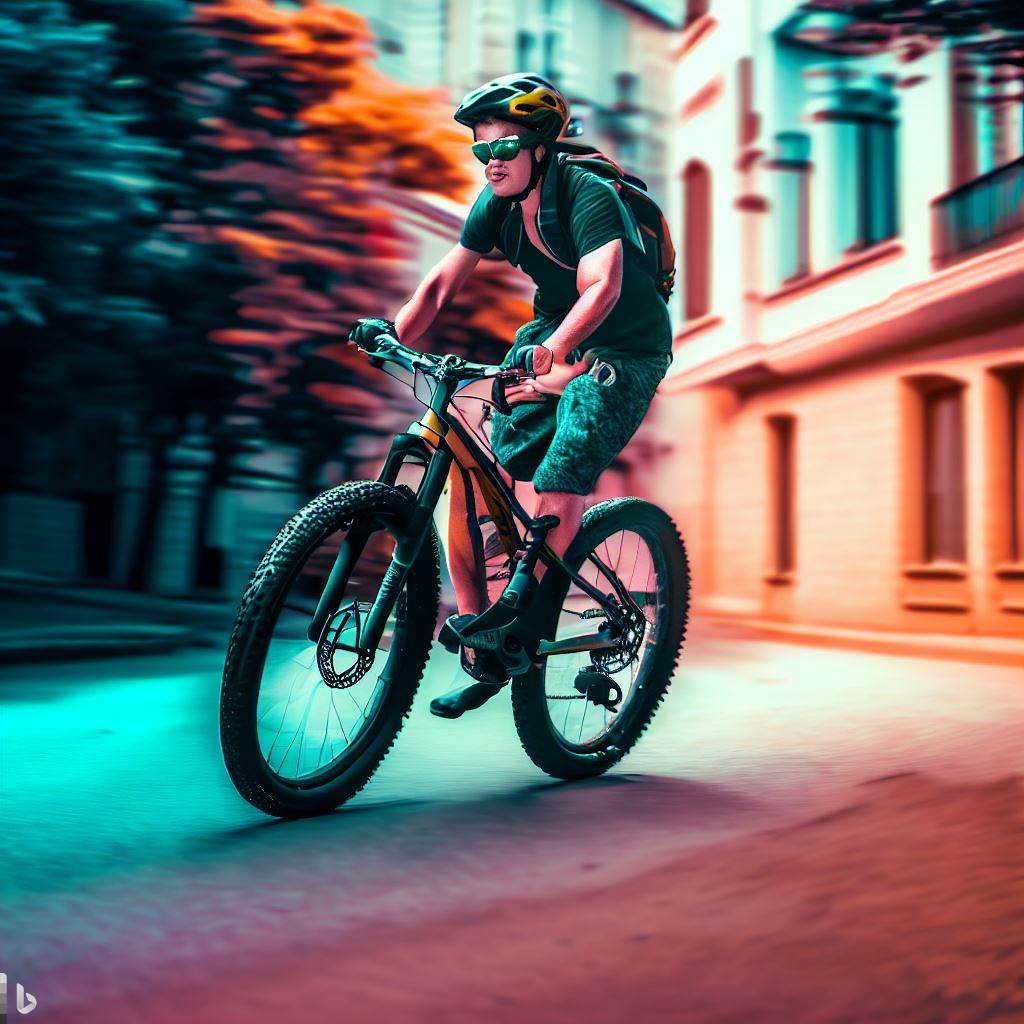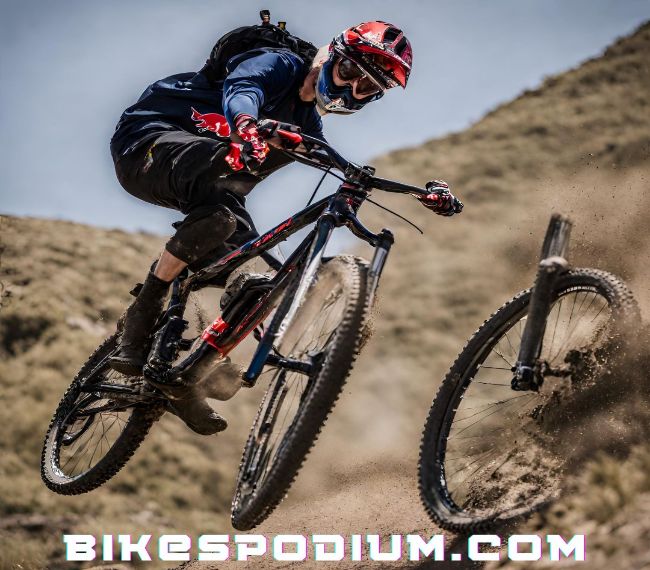
Tips for riding a mountain bike on the road?
Can you ride a mountain bike on the street? This is a question that has been increasingly relevant as more cyclists seek adventure in urban environments. In this comprehensive guide, we will delve into the world of riding mountain bikes on the street, exploring the suitability of these off-road machines for urban terrain.
Urban mountain biking has witnessed a surge in popularity, with riders discovering the versatility and unique advantages that mountain bikes bring to city streets. However, before you embark on this exciting journey, it’s crucial to understand the factors and considerations that come into play. In this guide, we will not only answer the question of whether mountain bikes are suitable for street riding but also provide you with the knowledge and insights needed to make informed decisions about your urban cycling adventures. Let’s begin by understanding the very essence of mountain bikes.
Read More:
Can You Ride a Mountain Bike On Pavement: Pros & Cons
Is Mountain Bike Good for Beginners? Learning, Equipment, Trails & More
Understanding Mountain Bikes
Mountain bikes, often known as MTBs, are purpose-built machines designed for rugged off-road terrain. Their DNA is infused with features tailored for conquering trails, handling uneven surfaces, and tackling the great outdoors. To appreciate why mountain bikes are unique, it’s essential to grasp their fundamental characteristics and design.
At their core, mountain bikes are engineered for durability and versatility. They boast robust frames and components that can withstand the challenges of rocky paths, muddy trails, and steep inclines. These bikes typically feature:
- Sturdy Frames: Mountain bike frames are constructed to absorb shocks and impacts, ensuring rider comfort and bike resilience.
- Wide, Knobby Tires: The tires are designed to provide optimal traction on various terrains, from loose gravel to forest trails.
- Suspension Systems: Many mountain bikes come equipped with front and rear suspension, known as full-suspension or hardtail, to absorb bumps and enhance control.
- Wide Range of Gears: MTBs offer a wide gear range to tackle both steep climbs and rapid descents efficiently.
- Disc Brakes: Reliable stopping power is essential, and disc brakes are a common feature to ensure safe rides in all conditions.
Mountain bikes were originally conceived for the thrill-seekers who sought to explore the great outdoors, venture into forests, and navigate challenging landscapes. However, in recent years, their capabilities have transcended the trails, capturing the attention of urban riders looking to infuse a sense of adventure into their city commutes and recreational cycling.
In the following sections, we will explore the factors that make street riding on mountain bikes a viable and exciting option, as well as the considerations you should keep in mind for a safe and enjoyable experience. Whether you’re a seasoned mountain biker or new to the world of two-wheeled exploration, this guide will equip you with the knowledge to make the most of your mountain bike on the street.
III. Factors to Consider: Is Street Riding Suitable for Mountain Bikes?
A mountain bike, with its robust build and off-road capabilities, may seem like an odd choice for navigating city streets, but several factors make street riding a consideration for mountain bike owners.
A. Factors Favoring Street Riding for Mountain Bikes
- Versatility: Mountain bikes are engineered to handle a wide range of terrains, making them adaptable to the unpredictable surfaces often encountered in urban environments. From pothole-ridden roads to gravel paths, mountain bikes can conquer it all.
- Durability: The rugged construction of mountain bikes means they can withstand the rigors of city streets, including curbs, bumps, and occasional rough patches, better than many other bike types.
- Comfort: Mountain bikes often feature a more upright riding position, providing better visibility in traffic and a comfortable, ergonomic posture for longer rides.
- All-Weather Performance: Many mountain bikes come equipped with disc brakes, which offer reliable stopping power in various weather conditions, crucial for safe urban riding.
B. Shift in Cycling Trends: Embracing Versatile Urban Use
Cycling trends have evolved significantly in recent years, reflecting a growing interest in versatile urban use of mountain bikes. There’s a noticeable shift from exclusively using mountain bikes for off-road adventures to recognizing their potential in urban environments. This shift is driven by several factors:
- Eco-Friendly Transportation: More people are turning to bicycles as a sustainable and eco-friendly mode of transportation, and mountain bikes are increasingly seen as adaptable options for city commuting.
- Adventure in Everyday Life: Urban riders are seeking adventure in their daily routines, using mountain bikes to explore hidden corners of their cities and find new, exciting routes.
- Fitness and Well-Being: The health benefits of cycling are well-documented, and mountain bikes, with their comfortable design, are enticing options for those who want to stay active while navigating urban landscapes.
C. Mountain Bikes in Urban Environments
Mountain bikes have proven their worth in urban environments. Here’s the argument for their effectiveness on city streets:
- Versatile Terrain Handling: Mountain bikes can effortlessly transition from asphalt roads to dirt paths, allowing riders to take shortcuts, explore parks, and navigate urban jungles with ease.
- Commuter-Friendly Features: Many mountain bikes come equipped with features like racks, fenders, and mounts for accessories, making them practical choices for daily commuting or running errands.
- Unique Aesthetics: The rugged aesthetics of mountain bikes can make a statement on city streets, reflecting a sense of adventure and outdoor enthusiasm.
In the next section, we’ll explore the numerous benefits of using mountain bikes on the streets, from their adaptability to various terrains to the sense of urban exploration they offer. Additionally, we’ll share inspiring stories of mountain bike enthusiasts who have successfully integrated these off-road machines into their urban lifestyles.
V. Limitations and Challenges: Adapting to Pavement and Traffic
While mountain bikes can excel in urban environments, it’s essential to acknowledge the unique challenges and limitations they may encounter on city streets.
A. Challenges and Limitations
- Handling and Speed Compared to Road Bikes: Mountain bikes are known for their stability and control on uneven terrain. However, on smooth pavement, they may not match the speed and efficiency of specialized road bikes designed for faster urban riding. Their wider tires and heavier build can require more effort to maintain higher speeds.
- Potential Discomfort During Long Rides: The upright riding position of mountain bikes that provides comfort on trails may lead to discomfort during long rides on streets. This can affect the rider’s posture and potentially cause fatigue or soreness.
B. Tips for Overcoming Challenges and Adapting to Street Riding
To make the most of your mountain bike on the street, consider the following tips:
- Tire Selection and Pressure: Choose tires optimized for street use to reduce rolling resistance. Adjust tire pressure for a smoother ride on pavement while maintaining stability on rough patches.
- Gearing Modifications: Explore gear ratio adjustments to enhance speed and efficiency on streets. This can help compensate for the inherent differences between mountain and road bikes.
- Saddle and Handlebar Adjustments: Experiment with saddle height and handlebar position to find a comfortable riding posture for longer urban rides. A more aerodynamic position might be beneficial for speed.
- Regular Maintenance: Ensure your mountain bike is in top condition by regularly maintaining components such as brakes, gears, and the drivetrain. A well-tuned bike performs better on the road.
VI. Importance
Now that we’ve explored the challenges and adaptations for mountain bikes on streets, let’s understand why this topic holds significance for both cyclists and communities.
A. Why Discussing This Topic Is Important
- Cyclist Empowerment: Understanding the potential of mountain bikes on streets empowers cyclists to make informed choices about their equipment and explore new riding opportunities.
- Community Engagement: Open discussions about mountain bikes in urban environments foster community engagement and inclusivity among cyclists of various interests and backgrounds.
B. Addressing the Growing Need for Alternative Transportation
With increasing concerns about traffic congestion and environmental sustainability in urban areas, alternative transportation methods are gaining prominence. Mountain bikes, adaptable to a range of terrains, can contribute to mitigating these challenges.
C. Promoting Physical Activity and Reducing Traffic Congestion
Mountain biking in urban settings encourages physical activity and provides a viable, eco-friendly alternative to cars. By reducing the number of vehicles on the road, mountain biking can help alleviate traffic congestion, reduce air pollution, and promote healthier communities.
In the upcoming sections, we’ll delve deeper into the benefits of using mountain bikes on the street, including their versatility and how they contribute to urban exploration and well-being.
VII. Modifications and Adjustments: Enhancing the Street Riding Experience
To fully enjoy your mountain bike on the street, it’s essential to make some modifications and adjustments. Here, we explore these enhancements that can elevate your street riding experience.
A. Optimizing Your Mountain Bike for Street Riding
- Tire Selection and Pressure: Consider replacing your mountain bike’s knobby off-road tires with smoother, street-oriented options. These tires reduce rolling resistance, making your rides on pavement more efficient. Additionally, adjust tire pressure to strike a balance between comfort and performance.
- Gear Ratio Adjustments: Experiment with your bike’s gear ratios to suit street riding better. You may want to increase the gearing to improve speed on flat roads, which is where mountain bikes can sometimes lag behind road bikes.
B. Bike Setup and Maintenance Tips
Maintaining your mountain bike is essential for safe and enjoyable street riding. Here are some valuable pieces of advice:
- Regular Maintenance: Establish a maintenance routine to keep your bike in top shape. This includes checking and lubricating the chain, inspecting brakes, and ensuring your gears are shifting smoothly.
- Proper Bike Fit: Ensure your bike is correctly sized and adjusted to your body. A comfortable and ergonomic fit will reduce the risk of discomfort and injury during long rides.
- Accessories: Consider adding accessories such as fenders, a rack for carrying items, and lights for improved visibility and practicality during city riding.
VIII. Safety Precautions: Navigating the Streets with Caution
Safety should always be a top priority when riding a mountain bike on city streets. Here, we emphasize essential safety precautions for urban mountain biking.
A. Prioritizing Safety
- Helmets, Lights, and Reflective Gear: Always wear a properly fitting helmet. Equip your bike with front and rear lights for visibility, especially if you ride at dawn, dusk, or during the night. Reflective clothing and accessories further enhance your visibility to motorists.
- Defensive Riding Strategies for Traffic: Be vigilant and anticipate the actions of other road users. Assume that drivers may not see you, and exercise caution at intersections, driveways, and high-traffic areas. Use hand signals to indicate turns, and obey traffic laws and signals.
B. Bike Safety in Urban Environments
Sharing statistics and stories about bike safety in urban environments can drive home the importance of safe riding practices:
- Accident Statistics: Share statistics about bicycle accidents in urban areas to underscore the need for vigilance and protective gear.
- Success Stories: Highlight success stories of mountain bikers who have successfully navigated city streets while prioritizing safety. These real-life examples can inspire others to adopt safe riding habits.
By taking these safety precautions and sharing relevant statistics and stories, we aim to create a culture of safe street riding among mountain bike enthusiasts. In the upcoming sections, we’ll continue to explore the legal considerations of mountain biking on streets and delve into the broader significance of this topic for both cyclists and communities.
IX. Legal Considerations: Know the Local Laws and Regulations
Riding mountain bikes on city streets involves adherence to specific legal considerations. Here, we delve into the legal aspects of street riding and provide guidance on staying compliant with the law.
A. Legal Aspects of Street Riding
- Differentiating Local, State, and National Regulations: The legality of riding mountain bikes on streets can vary significantly depending on your location. Local, state, and national regulations may have different rules and requirements. It’s essential to understand these distinctions to ensure compliance.
- Resources for Researching Local Laws: To navigate the legal landscape, riders should research and familiarize themselves with local laws and regulations. Resources such as city government websites, state transportation departments, or local cycling advocacy groups can provide valuable information regarding street riding rules.
B. Consequences of Non-Compliance with Street Riding Laws
Failure to comply with street riding laws can have various consequences, including fines, citations, or even accidents. Highlighting these consequences serves as a reminder of the importance of adhering to the law while riding on city streets.
X. Conclusion
In conclusion, this comprehensive guide has explored the suitability of riding mountain bikes on city streets. We’ve covered various aspects, including the unique features of mountain bikes, the factors that make street riding an attractive option, and the challenges and adaptations necessary for a fulfilling urban riding experience.
A. Key Takeaways
- Mountain bikes, while originally designed for off-road adventures, can be well-suited for urban riding due to their versatility and durability.
- Challenges such as handling, speed, and comfort can be overcome through modifications, adjustments, and proper maintenance.
- Safety precautions, including wearing helmets, using lights, and practicing defensive riding, are crucial for a safe street riding experience.
- Understanding and adhering to local laws and regulations is essential to avoid legal consequences.
B. Encouragement for Responsible Riding
We encourage all mountain bike enthusiasts to embrace responsible and safe street riding practices. By doing so, you not only enhance your own experience but also contribute to the positive image of cycling in urban environments.
C. The Role of Mountain Bikes in Urban Settings
Mountain bikes have proven their worth in urban settings, offering a unique blend of adventure and practicality. As you explore the city streets with your mountain bike, remember that responsible riding not only benefits you but also contributes to building more cycling-friendly communities.
XI. Closing Thoughts
In closing, we emphasize the value of mountain bikes in urban settings. They not only offer a fantastic mode of transportation but also a gateway to urban exploration and a healthier, more sustainable lifestyle.
A. Invitation to Share Experiences
We invite readers to share their experiences, insights, and stories related to mountain biking on city streets. Your experiences can inspire and educate others in the cycling community.
B. Connecting with Local Cycling Groups
For those seeking more guidance or wanting to connect with fellow riders, consider reaching out to local cycling groups or clubs. They can provide valuable support, organize group rides, and help you discover the full potential of mountain biking in your city.
XII. Additional Resources
To further your knowledge on urban mountain biking and bike safety, we provide a comprehensive list of references, websites, and organizations. These resources can serve as valuable references as you embark on your street riding adventures or seek to enhance your understanding of this exciting niche within the cycling world.



